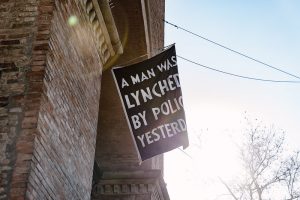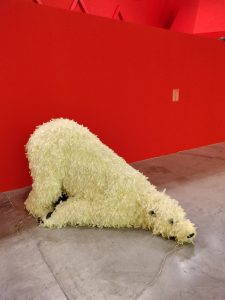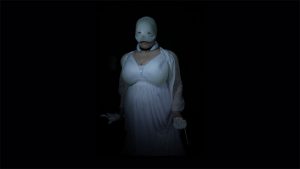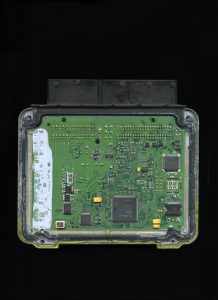Yesterday, i took the train to Hamburg and headed to The Deichtorhallen. The spectacular 6,000 sq. m. exhibition space, which used to be two market halls, has just opened a retrospective of Erwin Wurm’s work: The ridiculous life of a serious man. The serious life of a ridiculous man.
Most of his best known works are there, plus a few surprises.
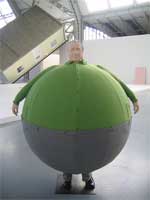
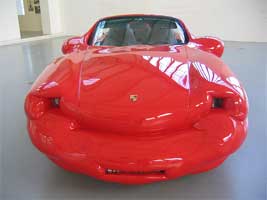
The one thing you can’t miss as you enter the hall is the Fat House, then the Convertible Fat Car at the back of the room, and a Fat green guy (who, Jenny notes, looks like the guys from the boost loopt mobile commercials) standing close to a super slim one wearing a hula hoop under his knitted shirt. Each of them grab so much attention that i nearly tripped over the Dog that swallowed a letterbox. The chubby car and house comment on our bourgeois self-content society. I learnt in the exhibition that germanspeaking staticians call the suburbs “speckguertel” (bacon belt) because of the above-average rate of obesity among residents who are also heavily dependent on their cars. The puffed-up objects might also be a poke at the trend for overblown artistic statements. There’s actually much critique of the art world in Wurm’s carreer. Whether in the form of art institutions fucking each other or by representing as melting and soft structures those places of aesthetic exclusivity and assumed interpretative authority which we call museums. Elsewhere, you see images of the artist gently carrying in his arms the director of the Vienna Museum of Modern Art or kissing another museum director, or having a third one standing on his knees.
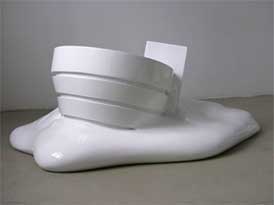
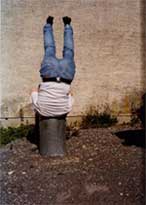
He hasn’t been always that caring with the powerful figures of the art world: back in 2002 for his series Curator/Imperator Wurm had curators fill their shirts and blouses with cushions which made them look pathetically pompous and inflated. Another favourite of Wurm’s look at the art world is the photography The artist begging for mercy which he dedicated to “Maurizio” as a reference to Cattelan‘s sculpture of a dwarfed Hitler absorbed in prayer.
There are many pictures of his One Minute Sculptures on the gallery walls. Sculptures are traditionally regarded as the outcome of a long-lasting process. As the title of the series suggests, the artist can work much faster, asking his models to look melancholic and adopt a dangerous, ridiculous, precarious and often acrobatic position for one minute. He documents the pose in a photography and here you are: the 1 minute living/performing sculpture is immortalized.
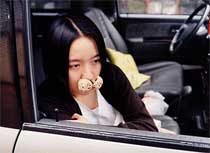
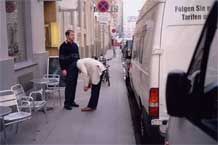 Taipei Outdoor Sculpture (girls/mushrooms) and Looking for a bomb 2
Taipei Outdoor Sculpture (girls/mushrooms) and Looking for a bomb 2
Now for the surprises:
1. My favourite photos were from the Brothers and Sisters series which depicts priests and nuns in unconventional attitudes. They are more subtle than the other pictures as it takes more time to detect the awkwardess of the situation.
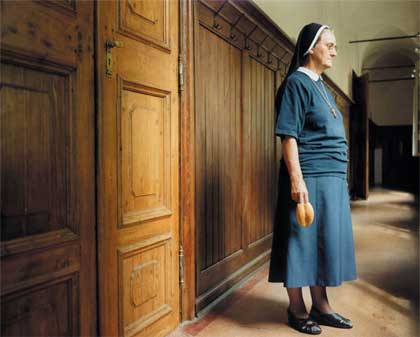 Sister Ruth
Sister Ruth
2. The items of clothing used as sculptures in a series produced for companies Palmers and Bally. Created for advertising purposes, they have now found a place in museums and galleries (which i suspect was exactly the point). Walking to the exhibition space, i actually saw a huge and extremely eye-catching ad for Palmers. It wasn’t one of Wurm’s works, though.
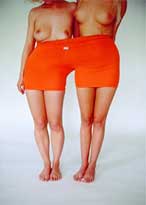
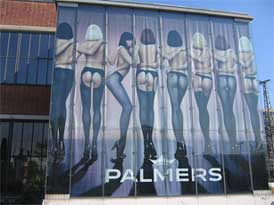 Twins (Palmers) and picture from the streets of hamburg
Twins (Palmers) and picture from the streets of hamburg
3. Although Wurm sets the beginning of his art around 1990, the exhibition showed a group of sculptures from 1987. They combine figurative religious sculptures from Africa and Oceania (at least they look like they come from there) with trivial artefacts from the industrial culture.
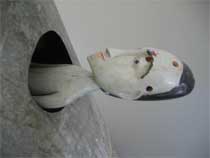
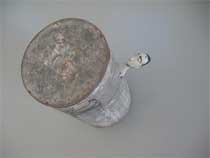
4. There is also a new site-specific work created for the Deichtorhallen: Mister Krause Coming Home after a Bar Crawl which shows a family house upside down. That was actually the one work i didn’t like.
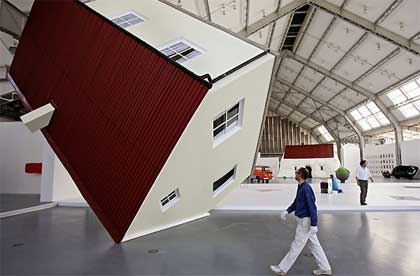
© Ulrich Perrey/lno/DPA
5. a video of Red Hot Chili Peppers, Can’t Stop, which ends with a mention that Wurm’s art was an inspiration for the video.

